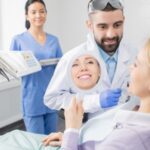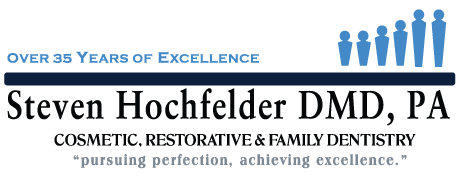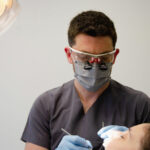 Few things can detract from the beauty of the smile as much as dental stains. Fortunately, tooth stains can be minimized or masked with dental treatment. Dr. Steven Hochfelder offers a comprehensive range of cosmetic dentistry treatments to address aesthetic flaws, including dental stains and discoloration.
Few things can detract from the beauty of the smile as much as dental stains. Fortunately, tooth stains can be minimized or masked with dental treatment. Dr. Steven Hochfelder offers a comprehensive range of cosmetic dentistry treatments to address aesthetic flaws, including dental stains and discoloration.
However, to get successful results, it is important to know what type of stain is being treated. Here, Dr. Hochfelder discusses the different treatments he offers when dealing with extrinsic vs. intrinsic tooth stains at his Lake Mary, FL dental practice.
Extrinsic Stains
When someone notices that the smile has been compromised by dental stains, they often assume that it is an extrinsic stain or one that exists on the surface of the tooth. Extrinsic stains do not go any deeper than the enamel of the tooth, so they are considered superficial in nature.
Extrinsic stains most commonly develop as a result of exposure to dark-colored foods and beverages or tobacco products. Some of the foods and beverages most likely to cause extrinsic tooth stains to include wine, cola, coffee, tea, and berries.
Treating Extrinsic Stains
Since extrinsic stains do not penetrate the deeper layers of the teeth, they respond well to teeth whitening. Teeth whitening treatments use bleaching agents to minimize dental stains and enhance the overall color of the teeth.
Although there are many over-the-counter teeth whitening products available, none are as effective as professional teeth whitening treatments. Dr. Hochfelder offers in-office and at-home teeth whitening treatments that can brighten the teeth by up to eight shades. This allows all patients to find a professional treatment method that is convenient for their unique needs.
Intrinsic Stains
From the outside, an intrinsic dental stain looks the same as an extrinsic stain. However, Dr. Hochfelder can determine if the discoloration is coming from the inner layer of the tooth or the dentin.
An intrinsic stain is more permanent than an extrinsic stain. This type of deep-set stain is not caused by foods, beverages, or tobacco use the way that extrinsic stains are. Common causes of intrinsic stains include aging, overexposure to fluoride, the use of certain medications, and dental trauma.
Treating Intrinsic Stains
Intrinsic stains are treated differently than extrinsic stains because this type of discoloration does not respond to the bleaching agents that are used in teeth whitening products.
Rather than removing intrinsic stains, Dr. Hochfelder improves the appearance of the teeth by concealing dental stains and other imperfections. The most appropriate cosmetic dentistry treatments for intrinsic stains are dental bonding and porcelain veneers.
If dental trauma has caused tooth discoloration, the best treatment may be a dental crown, which can restore the health, integrity, and beauty of the smile.
When addressing intrinsic stains, Dr. Hochfleder will recommend a treatment plan that is most appropriate for the unique situation.
Contact Our Dental Office
Dental stains don’t have to compromise the appearance of your smile. If you are interested in learning more about the dental treatments available to treat intrinsic and extrinsic tooth stains, contact us at your earliest convenience. Call (407) 321-8900 to find out how Dr. Steven Hochfelder can give you a brighter, whiter smile.














